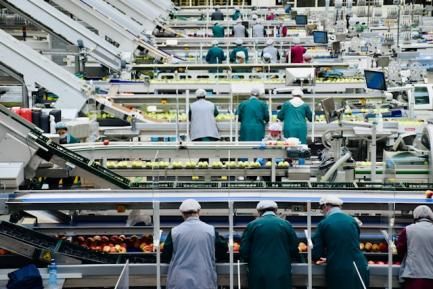Strong recovery in employment: explanatory factors
One of the main characteristics of the Spanish economy’s recovery has been its strong job creation. In the three years from 2015 to 2017, the number of full-time equivalent (FTE) jobs increased by slightly more than 500,000 a year,1 representing an average annual growth of 3.0%.2 In view of the strong performance of the labour market, below we analyse the factors that explain the high rate of job creation throughout the recovery.
The relationship between GDP and employment before and after the financial crisis
Between Q1 2015 and Q1 2018, FTE employment grew by 8.9% while GDP rose by 9.8%, giving us a ratio of 0.91 jobs created for each new unit of GDP. This is a very high figure and well above the rest of the countries of the euro area. It also contrasts with the past experience of the Spanish economy. For example, the ECB estimates that up until 2008, for each percentage point of GDP growth, Spain’s employment rate increased by just 0.6 pps.3 However, the ECB’s analysis shows that in recent years, this correlation between employment and GDP has steadily strengthened, to such an extent that today Spain is the leading country in the euro area in this regard, with almost 1 pp of employment growth for each percentage point of GDP growth (see first chart).
This improvement in the labour market is partly the result of the Spanish economy’s ability to start creating jobs from lower rates of GDP growth. In fact, as can be seen in the second chart, the curve that associates the growth in private-sector employment with that of GDP (the so-called Okun curve) has shifted to the left since 2012. As such, the economy currently begins to create employment starting from a GDP growth of 0.5% year-on-year (substantially lower than the threshold of 1.5% in the period 2006-2011). To the extent that this movement has occurred at the same time as the implementation of the 2012 labour reform, this could be one of the structural changes which would explain the current boom in the labour market, as has been analysed in several studies.4
However, the strength of job creation is also the result
of a cyclical component which should not be underestimated. Specifically, the last financial crisis destroyed so many jobs that, throughout the recovery, it has been necessary to create a large number of jobs. During the period 2008-2013, jobs were destroyed at a very high rate due to the rigidity of the labour market. What is more, the lack of mechanisms in place to reduce the number of hours worked per employee (i.e. the intensive margin) led to the cuts occurring in the extensive margin (i.e. with staff headcount reductions). Therefore, as can be seen in the third chart, between 2008 and 2013, the drop in employment was much more pronounced than that of GDP, to the extent that the ratio between the reduction in employment and in GDP was 2.2. On the other hand, the number of hours worked fell less than the proportional number of jobs did, meaning that the average number of hours worked per employee actually increased during the first few years of the recession. In addition, the lower levels of protection for temporary workers (compared to those on permanent contracts) and the very high rate of temporary employment (30% in Q1 2008) contributed to this reduction in the number of workers taking place by not renewing temporary contracts (see the fourth chart).
The composition by sector is also important
Another factor that explains the strengthening of the correlation between GDP and employment is the change in the relative importance of the different economic sectors. During the period of recession (2008-2013), the construction and industrial sectors suffered more than the services sector, which led to the gross value added5 of the services sector to increase from 70% of the total in 2008 to 76% in 2013. Given that services tend to show lower productivity growth (i.e. the ratio of GDP per worker grows less in the services sector than in others), an increase in the weighting of the services sector helps to reduce the gap between GDP growth and employment growth in the economy as a whole. In fact, the comparison with industry is particularly revealing
in this regard. The cumulative growth in employment between Q1 2014 and Q1 2018 was similar in both sectors (11.6% in industry and 11.5% in services). However, their respective gross value added over the same period was very different: while the services sector grew by 10.6% (in cumulative terms), the industrial sector did so by 16.2%.
However, the industrial and construction sectors have also contributed to the higher rate of job creation. Throughout the recession, both sectors saw significant destruction of jobs (for example, between 2008 and 2013, two out of every three jobs in the construction sector disappeared, while in the industrial sector the figure was nearly one in three). As a result, today they are showing strong rates of growth as they seek to recover some of the jobs that were lost. In Q1 2018, employment grew by 2.9% in the industrial sector and by 7.2% in the construction sector, whereas between 2000 and 2008 there was no growth in the former and 6.5% growth in the latter.
What will be the relationship between employment and GDP be in the future?
Besides the boost provided by the recovery of jobs in the industrial and construction sectors, the economy is also shifting towards tertiary industries as the relative importance of services grows (consistent with the trend seen across the major economies). This trend, together with a less rigid labour market, suggest that the stronger correlation between GDP growth and employment growth seen in Spain in recent years may be long-lasting. As such, as we have seen in the second chart, the Okun curve for Spain has shifted to the left, suggesting that the economy is now able to create jobs with lower rates of GDP growth. On the other hand, the Okun curve has developed a gentler slope, as can also be seen in the second chart. This suggests that each additional employee is able to produce more (i.e. each 1 pp increase in employment is associated with a greater increase in GDP growth) and that, in the event of a recession, fewer jobs would be lost.
However, it is important to remember that despite these improvements, the Spanish labour market still faces many challenges ahead, such as the high rate of temporary employment (particularly in the services sector). Such challenges represent a source of weakness in the labour market in the event of another recession occurring in the future.
1. According to data from the National Accounts.
2. This increase has been slightly lower than GDP, which has grown by 3.3% on average. This implies that the strong job creation has been achieved in parallel with increases in productivity (understood as apparent labour productivity, i.e. GDP divided by the number of full-time equivalent workers).
3. See the article «The relationship between euro area employment and GDP» in the European Central Bank’s Economic Bulletin of 6/2016.
4. See M. Izquierdo, A. Lacuesta and S. Puente, «The 2012 labour reform: an initial analysis of some of its effects on the labour market», Economic Bulletin of the Bank of Spain, September 2013.
5. In relation to the industrial, construction and services sectors as a whole.






